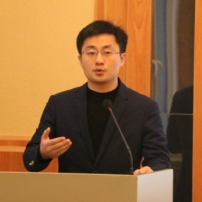Application of Graphene-Based Materials in Sensors and RF Electronics
A special issue of Materials (ISSN 1996-1944). This special issue belongs to the section "Carbon Materials".
Deadline for manuscript submissions: closed (20 September 2023) | Viewed by 15018
Special Issue Editors
Interests: graphene-based materials; nanocomposite materials; 5G communications; microwave electronics; energy devices
Interests: microwave/millimeter-wave devices and antennas; millimeter-wave and THz devices and systems
Special Issues, Collections and Topics in MDPI journals
Special Issue Information
Dear Colleagues,
This Special Issue is dedicated to reports on recent developments in the field of graphene-based materials, including fabrication, characterization, and most importantly, potential applications in RF, microwave, and millimeter-wave electronics and sensors. Since its discovery in 2004, graphene and graphene-based materials have been intensively investigated due to their unique properties including better flexibility and mechanical stability compared to their metal counterparts, unique electrical and thermal conductivity, as well as environmental benignancy. All these properties make graphene-based materials well suited for next-generation electronic devices, including but not limited to flexible displays, strain sensors, RF antennas, etc.
This Special Issue aims to survey recent progress in the development and optimization of the synthesis strategies of graphene-based materials, including graphene sheets, graphene films, and graphene inks and to explore the potential applications of these materials in the fabrication of next-generation RF/microwave electronics for 5G and wearable sensors for body-centric communications.
It is our pleasure to invite you to submit a manuscript for this Special Issue. Full papers, communications, and reviews are all welcome.
Prof. Dr. Daping He
Dr. Bian Wu
Guest Editors
Manuscript Submission Information
Manuscripts should be submitted online at www.mdpi.com by registering and logging in to this website. Once you are registered, click here to go to the submission form. Manuscripts can be submitted until the deadline. All submissions that pass pre-check are peer-reviewed. Accepted papers will be published continuously in the journal (as soon as accepted) and will be listed together on the special issue website. Research articles, review articles as well as short communications are invited. For planned papers, a title and short abstract (about 100 words) can be sent to the Editorial Office for announcement on this website.
Submitted manuscripts should not have been published previously, nor be under consideration for publication elsewhere (except conference proceedings papers). All manuscripts are thoroughly refereed through a single-blind peer-review process. A guide for authors and other relevant information for submission of manuscripts is available on the Instructions for Authors page. Materials is an international peer-reviewed open access semimonthly journal published by MDPI.
Please visit the Instructions for Authors page before submitting a manuscript. The Article Processing Charge (APC) for publication in this open access journal is 2600 CHF (Swiss Francs). Submitted papers should be well formatted and use good English. Authors may use MDPI's English editing service prior to publication or during author revisions.
Keywords
- graphene-based materials
- flexible sensors
- RF, microwave, and millimeter-wave electronics
- wearable antennas
- 5G communications
- body-centric
Benefits of Publishing in a Special Issue
- Ease of navigation: Grouping papers by topic helps scholars navigate broad scope journals more efficiently.
- Greater discoverability: Special Issues support the reach and impact of scientific research. Articles in Special Issues are more discoverable and cited more frequently.
- Expansion of research network: Special Issues facilitate connections among authors, fostering scientific collaborations.
- External promotion: Articles in Special Issues are often promoted through the journal's social media, increasing their visibility.
- e-Book format: Special Issues with more than 10 articles can be published as dedicated e-books, ensuring wide and rapid dissemination.
Further information on MDPI's Special Issue polices can be found here.







